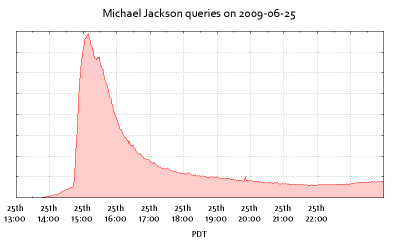How Many Networks?
Tuesday, May 4th, 2010This is something I’ve had on my mind for a while, but haven’t found a convenient time to bring up. Of course, somebody else was able to do it first. Jason Perlow’s ZDNet blog, Tech Broiler, has his thoughts on the diminishing returns of an ever-expanding social network. I won’t summarize the post—it’s worth your time to read it yourself—but I will say that there’s more than enough frustration with Facebook’s security, permission structure, and communications model to inspire people to give up on it altogether. This doesn’t mean I intend to do so, but I understand.
Also, as a note to Mr. Perlow, one gaijin to another: Seppuku is traditionally performed with a knife (tanto) or short sword (wakizashi), not the katana.
That’s not really what I wanted to discuss, but it’s as good a segue as any. Perlow’s post made me think again about how the social media boom has affected the way we spend our time online. There are enough different social network services now that they don’t even really compete anymore—except in the sense that they all want you to spend more time with them than any other. Each has its own specific use profile, and most individuals would never consider using one for something other than its core value.
Let’s take me as an example. In addition to this blog, I actively use Twitter, Facebook, and LinkedIn to varying degrees, as well as some old-school forums that match my interests; there’s some passive participation in other social media (gotta have YouTube access and various wikis), but that’s about it.
- Twitter is my other broadcast and communication channel, the one I use when writing a proper blog post isn’t the way to go.
- LinkedIn is my professional lifeline, the go-to option for exchanging ideas with subject matter experts, making sure I stay connected to people I don’t have regular contact with, and making myself available for hire.
- Facebook is for fun and time-killing. I use it to keep in touch with high school friends, to catch the occasional interesting article somebody posts in their feed, and to play games.
There isn’t a whole lot of overlap between these big three, integrations notwithstanding. I couldn’t imagine trying to maintain a professional presence solely on Twitter, and the entertainment options of LinkedIn pretty much end with the Answers page. This means that each social network requires separate attention, and their sheer number means networking can be a full-time job. My reaction to Google Buzz was basically “Oh crap, one more thing to add to the list.” It took more of my time, and didn’t have a clear niche of its own, so I eventually opted out.
Facebook might be next for me, assuming I can break the addictive hold of Mafia Wars and Viking Clan. This is not solely because of anything inherently wrong with Facebook (though there’s plenty)—I’ve fallen into the trap of bigger = better. I have over 600 “friends” on Facebook, and I honestly don’t know who most of them are. The games I play there require a large network to get maximum value, so I made and accepted lots of friend requests. They are not my friends (except the ones I already knew outside of Facebook). I couldn’t pick them out of a police lineup. Some of them have social and political views that I can’t stand. But I keep them around anyway because they serve a function and because it’s too much trouble to weed them out.
Still, the more FB friends you have, the more messages you get. I hate leaving messages unviewed; I regularly check my email spam so I don’t have the feeling there’s something waiting for me, and it’s this feeling that made Buzz such a burden.
Connections on Twitter or LinkedIn don’t require the same level of supervision. I follow the people I want to follow, and it’s easy enough to unfollow them—and there’s only good in having lots of followers myself. LinkedIn doesn’t get in my way unless it’s an opportunity of some sort for me. Facebook just keeps poking at me, asking me to get back in touch with Friend X whom I’ve never met, or buy Godfather Points for my mob, or install a toolbar, or expand my permissions, etc. etc.
Honestly, I don’t think I’d mind any of it if there was an easier way to manage it. What I really want is a central control panel for all my networks that lets me choose what information is available to each, with bulletproof security so I don’t have to worry about getting all my networks jacked at once. After that, all I have to do is work on my self-control so I don’t play Bejeweled all weekend.
 RSS Feed
RSS Feed